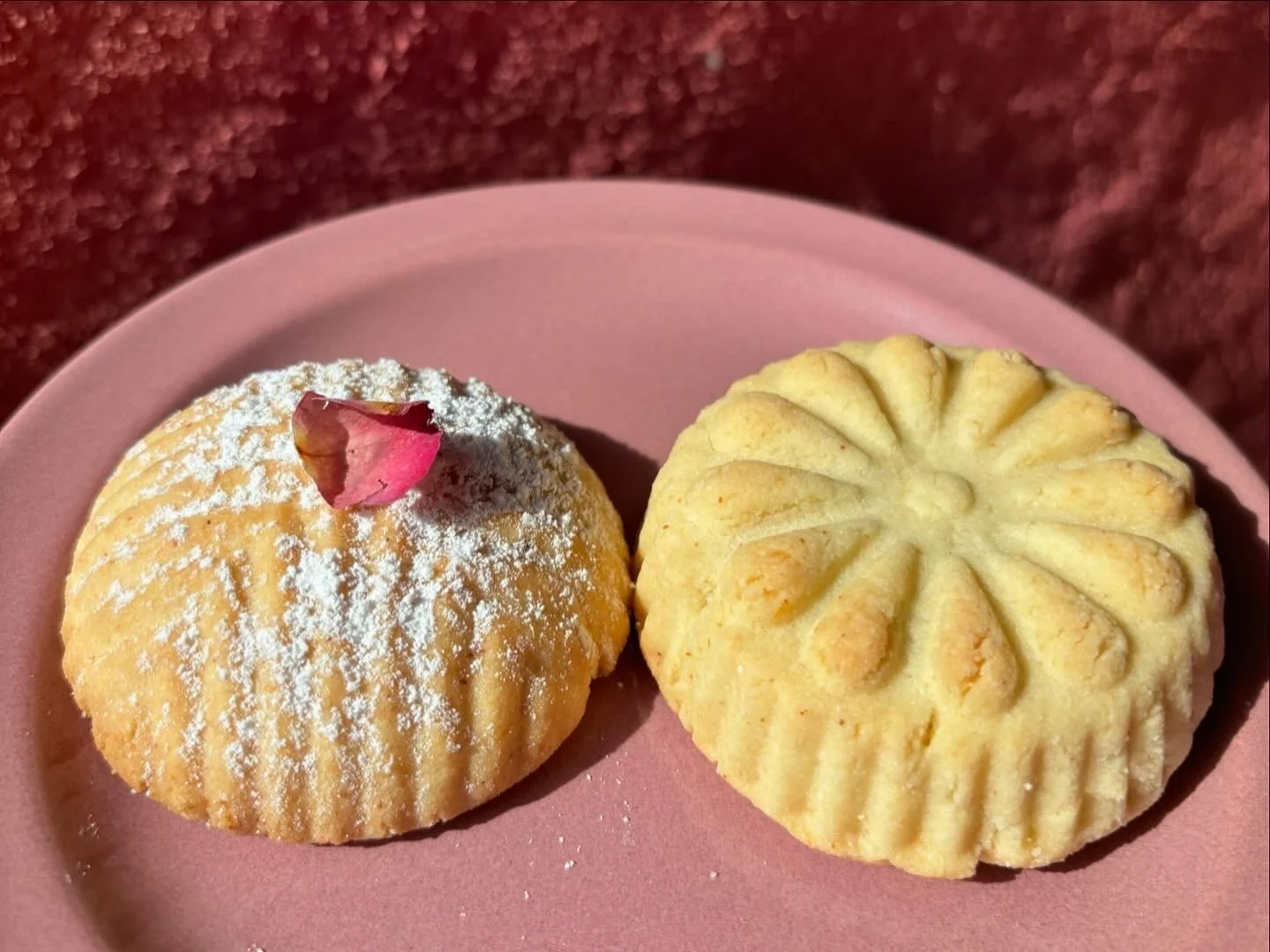Heritage Baking: The Ma’amoul
Rose water, orange blossom, mastic, mahlab, semolina, ghee, sugar and sweet time. The magic of the Ma’amoul not only resides in its list of aromatic ingredients but also its cultural significance - usually prepared for religious rituals such as Easter or Eid.
Ma’amoul are prepared throughout the Arab world and include ingredients that originate across the Mediterranean & all throughout the Middle East, North Africa and the Levant.
Mastiha comes from the Mastic tree on the island of Chios, Greece. A small incision is made into the tree whereby thick sticky tears shed and over 15-20 days chrysalis into irregular jewel like shapes.
Rose Water comes from Damascus rose petals which are picked and distilled among villages all over Lebanon. Within the Bekaa valley is a large plantation whereby a Syrian family have created a farm of flowers from the seeds they brought over from their home country. They harvest the rose whilst it’s still asleep (as to hold its fragrance) and send the petals off to be distilled.
Orange Blossom come from the vibrant white pearls of the bitter orange tree and are distilled into orange blossom water; a celebration of spring & new beginnings & created all throughout the Levant.
Mahlab is a spice produced by the seed kernels of the mahlab cherry tree and used for centuries throughout the Middle East and Greece. Its flavour is a combination of almond and cherry and comes in a powdered form.
Making Maamouls is heritage inspired baking, perfected and passed down through families for generations. In Lebanon these semolina biscuits are moulded and decorated by hand in wooden moulds called a tabe.
Out here in the diaspora, Joey visits the Perth Lebanese Baker in Welshpool to collect these ingredients to make Ma’amouls for the Farmers Markets. The beautiful Lebanese woman working there tells him of how she makes her Ma’amouls late at night by placing a plastic sheet on the floor and tapping her tabe whilst everyone sleeps.
Below is the recipe for date Ma’amouls, and you too can find all the ingredients at the Perth Lebanese Bakery along with the tabe mould and different fillings. The recipe below focuses on the date filling, however you can try the pistachio, walnut or go crazy and invent your own. Or failing that, come find us at Subiaco Farmers Market or Fremantle Farmers Market every weekend for your Ma’amoul fix.
Sahten!
left is the walnut, right is the date
DOUGH
500g course semolina
500g fine semolina
100g all purpose flour
1/4 teaspoon mastic
150g sugar
1 teaspoon mahlab
1/2 teaspoon instant yeast
400g ghee or butter
1 tablespoon orange blossom water
1 tablespoon rose water
icing sugar for dusting
DATE FILLING
500 g date paste
2 tablespoon ghee or butter
2 tsp cinnamon
To make the dough combine both semolinas and flour in a large mixing bowl. Crush mastic in a mortar and pestle with a table spoon of the sugar until fine. Add it to the bowl along with he rest of the sugar, mahlab and yeast. Use your fingers to add the soft butter or ghee until it looks like fine breadcrumbs. Add both rose and orange blossom waters plus a tablespoon or so of water if still too dry. Kneed dough until all incorporated and you have a firm product. Usually takes about 10-15 minutes depending on the weather. Leave at room temperature for 3 hours.
Preheat the oven to 180C and line your baking trays
Combine date mix with butter and cinnamon
Roll about a tablespoon of your dough into a ball and flatten it out in your palms. Place a teaspoon of the date mixture (rolled into a ball) in the centre and fold the dough over your filling and roll again between your palms to evenly case the filling. Take your tabe and press the ball into the mould until it’s evenly spread. You can add a bit more dough if needed. Slam the mould onto the tray so it comes out and continue. Once your tray is filled, place in the oven for 20 min or until lightly golden on the bottom of each ma’amoul. Cool on wire racks and store in an air proof tin.
